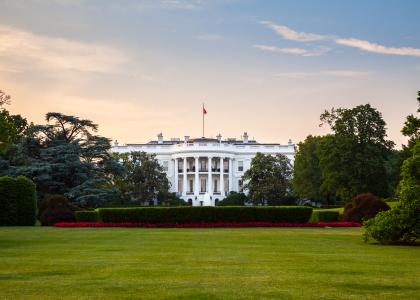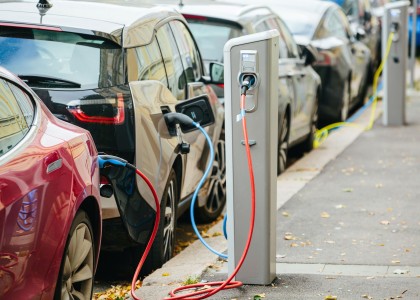With a little more than a year elapsed since President Trump’s inauguration, progress on federal appliance standards has slowed to a crawl, while state efforts are picking up steam. Although the administration affirmed or completed several important Obama-era standards during its first months, others remain in limbo. The US Department of Energy (DOE) has now missed multiple legal deadlines and, in December, released a regulatory plan that puts the government on track to miss many more in 2018 and beyond. State policy makers have not wasted any time stepping into the breach; this year is already shaping up as a big one for state standards.
Status of standards at risk
With President Trump and Congress both focused on cutting regulations, 2017 opened with all eleven standards finalized during the last year of the Obama administration on the chopping block. Some good news: seven of these standards are now safe from rollbacks and efforts to protect the other four are underway. Here’s the rundown:
- Manufacturers, consumer groups, and environmental advocates all urged preservation of four major standards developed through the negotiated rulemaking process. In spring 2017, after reviewing public input, the administration affirmed new standards for central air conditioners and heat pumps, beverage coolers, swimming pool pumps, and walk-in coolers.
- Three standards developed through the more common, non-negotiated rulemaking process were on some target lists for repeal by Congress. But deadlines for Congressional repeal passed with no action to remove the new standards for ceiling fans, battery chargers, and dehumidifiers.
- Four other standards remain in limbo. Although signed and issued in late 2016, final standards must wait 45 days for publication in the Federal Register to allow stakeholders to identify errors, and this error-correction period spanned the change in administrations. The only error correction request filed was non-substantive, yet a year later the Trump administration has still not officially published standards for portable air conditioners, air compressors, commercial boilers, and uninterruptible power supplies.
In mid-2017, state attorneys general and consumer and environmental groups sued DOE to compel publication of the four standards in limbo. In addition several states are considering their own standards for some of these products. More on that below.
According to DOE’s analyses, the eleven standards combined will save consumers and businesses about $30–75 billion over 30 years, even after taking into account DOE’s estimated impact on up-front product prices.
Forward DOE progress slows
Although DOE did advance some work in 2017 — for example, initiating several test procedure reviews — it had missed eight legal deadlines for reviewing standards by the end of the year. Then, in December, DOE quietly released a regulatory plan that moved work on 20 standards and 17 test procedures to “long-term action” status, meaning the agency had no plans to work on these within the next year. Beyond 2018 DOE listed the plan for nearly every item as simply “TBD.”
Missing deadlines violates the fundamental compact between states and the federal government enshrined in the national appliance standards law. National standards generally preempt state standards, with some narrow exceptions. But in taking over responsibility for efficiency standards from the states, Congress tasked DOE with keeping the standards up to date. DOE must review each existing standard at least once every six years and determine if improved standards are “technologically feasible and economically justified.” If DOE finds that a revision is warranted, a final rule is due two years later.
DOE last fell behind on so many deadlines during the mid-2000s. Congress initiated oversight and state attorneys general and consumer and environmental groups filed lawsuits, compelling DOE to develop a five-year plan to catch up.
Delay not only hurts consumers — ASAP and ACEEE have estimated that the next round of updates to current national standards could save up to $43 billion annually by 2035 — it also harms manufacturers. Some complain that when DOE falls behind on deadlines, it throws their planning out of whack. Instead of a predictable, steady cadence of reviews and potential updates, manufacturers will likely face a crunch of updates compressed into a short period at some point in the future.
State action ramps up
While DOE progress has slowed, some states have stepped in to fill the void. Vermont got the ball rolling last spring, becoming the second state after California to put all federal standards into state law as a protective measure against federal rollbacks. A number of other states, including Washington, Hawaii, Rhode Island, and Massachusetts have joined Vermont in actively considering new standards legislation in 2018. In January, New York Governor Andrew Cuomo, citing an “abdication” of federal leadership, announced a plan to develop state-level appliance standards. New York intends to work in coordination with other states to “provide certainty to manufacturers that appliance efficiency standards must be met across the United States.”
California, active at the state level for many years, has kept up its long-standing leadership role. The California Energy Commission (CEC) completed new standards for computers and monitors and advanced several others. In January, California identified another half dozen products under consideration, including several of the products left in limbo by DOE. Analysis published by ASAP and ACEEE in 2017 is helping to inform these various state efforts.
It’s not surprising that states are picking up the baton; many have been down this path before and know efficiency standards are an effective way to address a range of state policy goals. Sixteen states already have standards laws on the books. Included on the list: Texas, where then-Governor Rick Perry (now US Energy Secretary) signed standards for water-using products into law in 2009 to help address long-standing drought problems in his state.
Light bulb standards advance
No update on appliance standards would be complete without touching on light bulbs. Congress’ 2007 law, which established the first efficiency standards for common household light bulbs, has proven both consequential and far-sighted. Initial standards took effect in 2012-14, eliminating the most inefficient versions of incandescent light bulbs. Congress required DOE to develop stronger standards, but given DOE’s past difficulty in complying with Congressional requirements, established a “backstop” standard. If DOE failed to comply with a series of procedural steps or to set an adequately strong standard, Congress provided that the standard would default to 45 lumens per watt in 2020.
That backstop requirement provided certainty to the market and set the United States on a long-term trajectory that helped spur big investments in LED technology. Those investments have produced the wide array of high-quality LED light bulbs on store shelves today that can cost less than $5 and last ten years or longer.
DOE has acknowledged that the backstop standard was triggered. But some manufacturers have argued the opposite, creating some uncertainty. In late December, a federal judge denied a request from manufacturers for a court order preventing California from implementing the light bulb standards two years early, as permitted by law. The standards are now in effect in California. If the Trump administration attempts to scale back or fails to enforce the federal standard, it’s a good bet that litigation will ensue. The law also provides authority for state attorneys general to step in to enforce the federal law.
For more information on light bulbs, check out my colleague Chris Granda’s article in this month’s AESP Strategies newsletter.
What’s next
We expect that states will be the most promising venue for progress in 2018 on new energy- and water-saving standards. The number of active states will only grow with the federal slowdown. Although DOE is missing deadlines, the agency will work on some topics. For example, DOE has begun a process to revise its procedures for developing standards. We remain hopeful that DOE will choose to advance negotiated standards, such as the agreement for new circulator pump standards completed in 2016, and initiate new negotiated rulemaking proceedings. Most likely, litigation over missed deadlines will be filed sooner or later, and, in time, DOE will get to work catching up on missed deadlines. All in all, a year after President Trump’s inauguration, work to defend national standards, ensure DOE complies with the law, and advance new, cost-effective state-level appliance standards is as active as ever.




